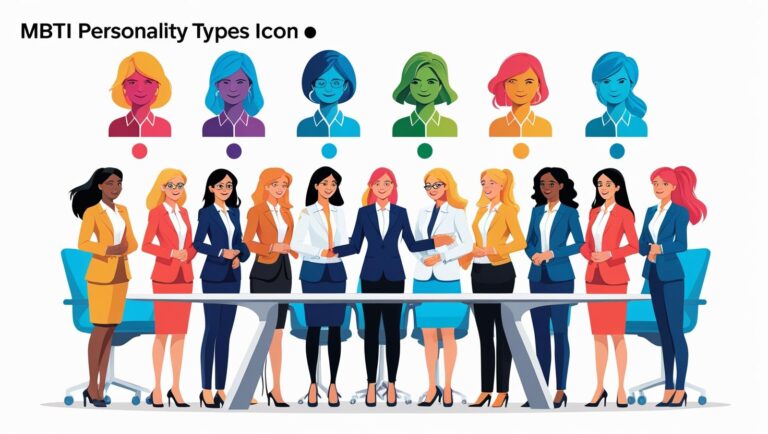Using Myers-Briggs to Improve Team Dynamics and Conflict Resolution
Introduction
In the evolving landscape of workplace dynamics, team synergy and conflict resolution are no longer “soft skills” — they’re strategic imperatives. One tool that continues to stand out for its practical application in understanding individual and team behaviour is the Myers-Briggs Type Indicator (MBTI).
While many associate MBTI with basic personality assessments, its real power lies in its application to real-world team challenges. From improving collaboration to de-escalating conflict, MBTI can be a game-changer for HR professionals, skills development facilitators, and managers looking to lead with insight.
What Is the MBTI and Why It Matters for Team Development?
The MBTI is based on the work of psychologist Carl Jung, later developed by Isabel Briggs Myers and Katharine Briggs. It categorises individuals along four psychological dimensions:
Extraversion (E) vs. Introversion (I) – Where you draw energy from
Sensing (S) vs. Intuition (N) – How you take in information
Thinking (T) vs. Feeling (F) – How you make decisions
Judging (J) vs. Perceiving (P) – How you approach structure and time
These dichotomies combine into 16 personality types, such as ENFP, ISTJ, or INFJ. Each of these types brings its own approach to communication, learning, leadership, and conflict.
Understanding these types in a team setting allows HR and development practitioners to:
Build cohesive teams with complementary strengths
Predict and prevent common miscommunications
Offer targeted coaching and support
Create psychologically safe environments for feedback and development
MBTI and Team Dynamics: The Practical Benefits
1. Type-Based Strength Mapping
Each MBTI type has a natural “zone of genius.” For instance:
ENTPs bring energy and new ideas, but may struggle with follow-through.
ISFJs offer consistency and loyalty, but may avoid open conflict.
INTJs are strategic thinkers, ideal for long-term planning, but may come off as aloof.
ESFPs energise team morale but may lose focus during detailed planning.
Mapping your team’s MBTI types can help managers assign roles more strategically, playing to each person’s strengths and avoiding unnecessary frustration.
2. Pre-empting Friction and Miscommunication
MBTI types naturally differ in how they communicate and process stress:
Thinkers (T) can appear blunt to Feelers (F), who prioritise harmony.
Judgers (J) may see Perceivers (P) as flaky, while P types may see J types as rigid.
Introverts (I) may disengage in chaotic brainstorms preferred by Extraverts (E).
By identifying these tendencies upfront, team leads can adjust interaction norms, set expectations clearly, and avoid personalising behaviour differences.
MBTI in Conflict Resolution: Moving from Personality Clashes to Constructive Dialogue
Conflict in teams is not inherently negative. What matters is how it’s addressed. MBTI offers a framework for understanding:
Why a conflict is happening (e.g., values clash vs. communication style)
How each person processes tension
What they need to feel heard and move forward
Here’s how each dichotomy can manifest in conflict — and how to resolve it:
Extraversion vs. Introversion
E types want to “talk it out” immediately; I types need time to reflect.
🔧 Solution: Allow cool-off time before discussion, then host a structured conversation.
Sensing vs. Intuition
S types focus on details and facts; N types focus on possibilities and meaning.
🔧 Solution: Summarise what’s real (S) and what it could mean or become (N), respecting both.
Thinking vs. Feeling
T types argue logically; F types argue emotionally or ethically.
🔧 Solution: Acknowledge the emotional weight before debating the facts.
Judging vs. Perceiving
J types want closure; P types want to explore options.
🔧 Solution: Create flexible timelines with decision checkpoints.
Using MBTI in Team Workshops and Development Programs
MBTI should not be a one-off personality quiz — it’s best implemented as part of a facilitated team development workshop or ongoing coaching program. Here’s how to apply it practically:
1. Type Discovery and Team Mapping
Begin with self-assessments and feedback sessions. Use reputable MBTI tools or certified practitioners.
Map the team’s types on a visual grid. Identify over-represented traits or missing styles.
2. Role-Playing Exercises
Use controlled conflict scenarios based on real team issues. For example:
Simulate a planning meeting between a Judger and a Perceiver with conflicting styles.
Role-play a project pitch from a Thinker to a Feeler-based manager.
Break into type-specific groups to brainstorm ideal communication preferences — then swap and compare.
These activities help team members see their own blind spots and develop type empathy — understanding and respecting styles different from their own.
3. Type-Informed Communication Guidelines
As a team outcome, create a shared document or agreement outlining:
How the team will handle tension or disagreement
Preferred feedback styles
Meeting structures that accommodate all types (e.g., send agendas early for introverts, allow live discussion for extraverts)
MBTI and Leadership: Empowering Managers with Insight
Managers who understand their own MBTI type can also lead more effectively. For example:
An INTJ manager might need to consciously invite feedback and build trust.
An ESFJ manager may need to separate emotional support from performance accountability.
A Perceiving-type leader might need to create artificial structure to support Judgers.
Additionally, MBTI can guide how managers coach others:
| Type | Managerial Coaching Tip |
|---|---|
| INFP | Use purpose-driven goals and values alignment |
| ESTJ | Focus on logic, process, and performance metrics |
| ENTP | Let them explore and innovate — give room for tangents |
| ISFJ | Offer stability and appreciation for behind-the-scenes work |
Cautions and Limitations of MBTI
Like any tool, MBTI has its critics and limitations. It should never be used to:
Hire or fire candidates
Label someone permanently or assume capability
Replace performance management systems
MBTI does not measure intelligence or skill — it’s a tool to improve understanding, not a verdict on potential.
Also, MBTI is based on self-reporting, which means context and mood can affect results. People also grow and evolve — so it’s useful to revisit MBTI insights periodically.
MBTI in the South African Context
In South Africa’s diverse, multilingual, and multicultural workforce, understanding underlying personality differences can prevent unnecessary tension rooted in miscommunication.
For example:
Team members from different racial or linguistic backgrounds may already feel cautious — MBTI adds a non-threatening layer of dialogue.
In learnership and skills development environments, MBTI insights can support mentor-mentee alignment and boost retention.
In conflict-prone sectors (e.g., mining, manufacturing), MBTI workshops can support union-management dialogue by helping both sides understand each other’s default styles and values.
Conclusion
MBTI is not just an HR curiosity — it’s a powerful lens through which to see your team. When used with skill and sensitivity, it becomes a bridge between personalities, enhancing collaboration and reducing friction.
For HRD professionals, this means more effective training programs. For managers, it means fewer team blow-ups and more trust. And for organisations — especially in a South African context — it means building more resilient, self-aware, and high-performing teams.



